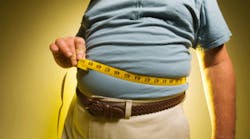Obesity continues to present a problem to both the adult and younger population of the United States, according to new data from the Centers for Disease Control and Prevention (CDC).
About 40 percent of U.S. adults are considered obese, and the rate grew 20 percent for 12 to 19 year olds, the CDC’s National Health and Nutrition Examination Survey (NHANES) indicated.
“These staggering statistics are unacceptable. Every child needs and deserves the opportunity to be healthy,” said Nancy Brown, American Heart Association CEO in a statement. “Parents and teachers are calling on their communities to ensure school standards for nutrition and physical education that enable millions of children to fuel their bodies and strengthen their hearts. It is our moral imperative to advocate for national, state and local policies that promote good nutrition and physical activity for our children.”
Disparities across race and socioeconomic backgrounds increases concern about what efforts are being initiated to prevent and reduce obesity, according to the AHA.
“The disparities in obesity rates among blacks and Hispanics, both young and old, are shocking – we can and must do better,” Brown said. “Our nation will continue to be in the midst of this public health crisis until we drive transformative change in every community. We have the tools. We just need to employ them.”
The CDC implements the NHANES using interviews and physical exams to measure rates of disease across the U.S. According to the AHA, although public health efforts have slowed the rate of increasing obesity in recent years, the proportion of the population that is obese continues to slowly rise, reiterating the need for further outreach.
“We know the basics of supply and demand help people eat healthier and move more,” said Eduardo Sanchez, MD, MPH, AHA chief medical Officer for prevention. “It will take a massive push from the food and beverage industry to increase the supply of affordable, healthy, nutritious foods and fewer sugary drinks. And it takes a tremendous effort on the part of consumers to demand healthier products and policies in their communities. We all have to do our part.”
